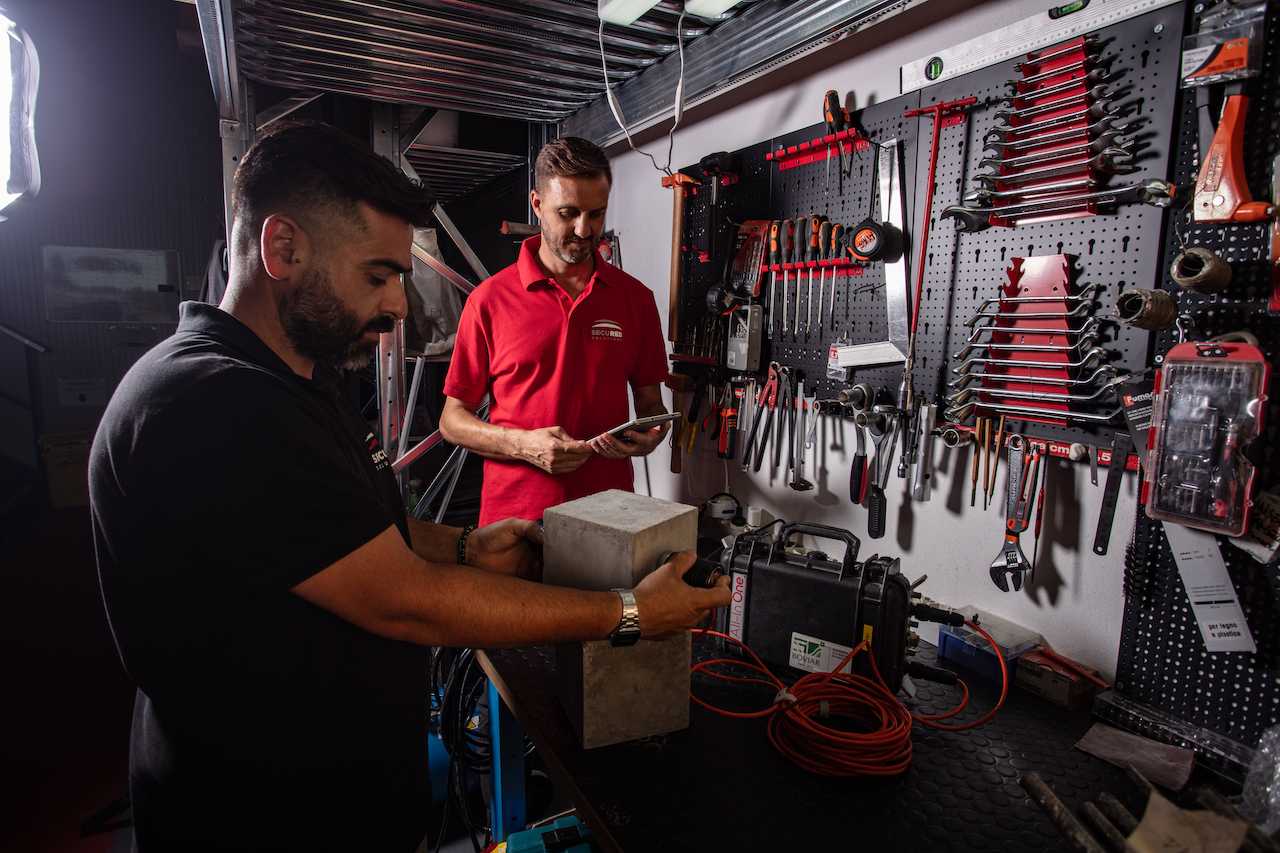Structural diagnostics is a field of civil engineering that deals with surveying geometry, analysing material properties, and assessing the performance of existing structures to certify their safety, reliability and integrity using measurement instruments, mathematical models and advanced technical knowledge. It is, therefore, a discipline that requires a wide range of skills and makes use, more than other specialisations, of the experience and sensitivity gained through direct observation of the behaviour of structures.

With over a decade of experience, the Secured Solutions team is a leader in structural diagnostics. Our innovative, state-of-the-art equipment allows us to conduct the most appropriate investigations for any structure. Beyond conducting tests, we provide engineering consultancy, interpret investigation results, and design consolidation and safety interventions, adding significant value to our services.
The Laboratory has permission to perform tests and inspections on building materials and structures of existing buildings made of standard and prestressed reinforced concrete, steel, wood and masonry, according to Circular No. 633/STC of the Ministry of Infrastructures and Transport. This is a recently introduced certification relating to laboratories that perform tests on construction materials in situ and fully implement the principles of the current Technical Standards for Construction, now Ministerial Decree 17.01.2018, for which the safety assessment of existing constructions must be carried out through an adequate process based on in-depth and careful knowledge of the structures under investigation, carried out by qualified laboratories and technicians.
Our team at the Structural Diagnostics Laboratory approaches tests with a rigorously organised and systematic process. We also collaborate with the Department of Civil Environmental Engineering and Architecture (DICAAR) of the University of Cagliari. The first step involves reconstructing the material history of the structures under investigation, which includes tools and methods proper to architectural restoration, such as archive research, geometric and morphological survey, and detailed schematisation of the crack pattern. This broad and multidisciplinary spectrum of knowledge, combined with analysing potential problems and risk factors, allows us to develop a comprehensive investigation plan in agreement with the structural engineer. This plan may include non-destructive or partially destructive tests and, in some cases, static and dynamic monitoring of the work, enabling us to fully identify the construction techniques and materials used to execute the structure and to trace its current configuration.

All our technicians who carry out non-destructive testing (NDT) in situ are qualified according to the UNI 11931:2024 standard, “Certification of technical personnel performing non-destructive tests in the field of civil engineering and cultural and architectural heritage”.
At Secured Solutions, we can perform investigations, non-destructive inspections, and static and dynamic monitoring on any structure. Our team of technicians has the necessary know-how to provide the best possible results for our clients.
Examination centre in Sardinia for the qualification of technicians for non-destructive testing (NDE) in the civil sector
Secured Solutions is also the only examination centre in Sardinia for the qualification of technicians for non-destructive testing (NDE) in the civil sector, authorised by the “Centro Italiano di Coordinamento per le Prove Non-Destructive” (CICPND).

Nationally recognised lecturers hold preparatory courses and examinations at our premises to enable company technicians and freelance professionals to obtain Level 2 certification on the main non-destructive tests in the civil sector, according to UNI 11931:2024.
List of the primary investigations that the Secured Solutions team can perform
Below is a list of the primary investigations that the Secured Solutions team can perform, with the specific reference standard:
- magnetometric test – pacometric (MT)
- sclerometric test (SC) – UNI EN 12504-2:2012
- extraction test – Pull-Out method (ES) – UNI EN 12504-3:2005
- ultrasonic test (UT) – UNI EN 12504-4:2005
- in situ sampling of concrete – cylindrical samples extracted by coring and powdering – UNI EN 12504-1:2009
- in situ sampling of steel specimens – plain bars and improved adhesion bars – UNI EN ISO 6892-1:2016
- chemical analysis (CH), determination of carbonation depth and chloride ion penetration profile in concrete – UNI 9944:1992
- tests with ASTM single and double flat jacks
- static load tests
- pull-out adhesion test – Pull Out method
- electrochemical analysis for measuring potential and corrosion rates
- static diagonal compression load tests on masonry
- structure monitoring,
- infrared thermography
- endoscopic investigations
- georadar surveys;
- mechanical characterisation of masonry mortars;
- wood moisture measurement;
- wood penetrometric testing.







